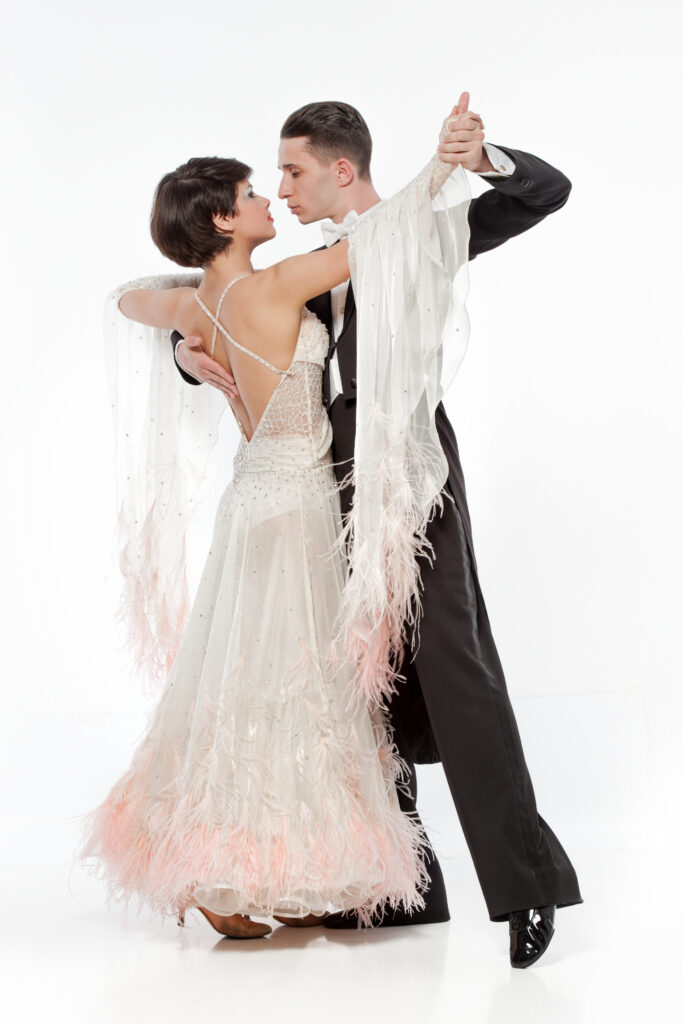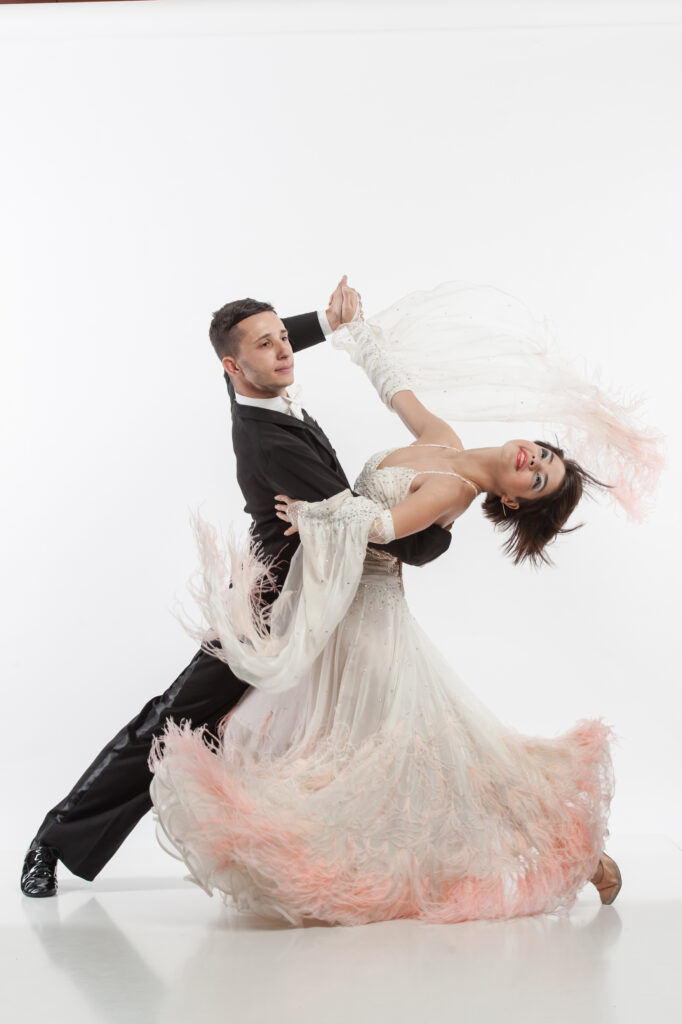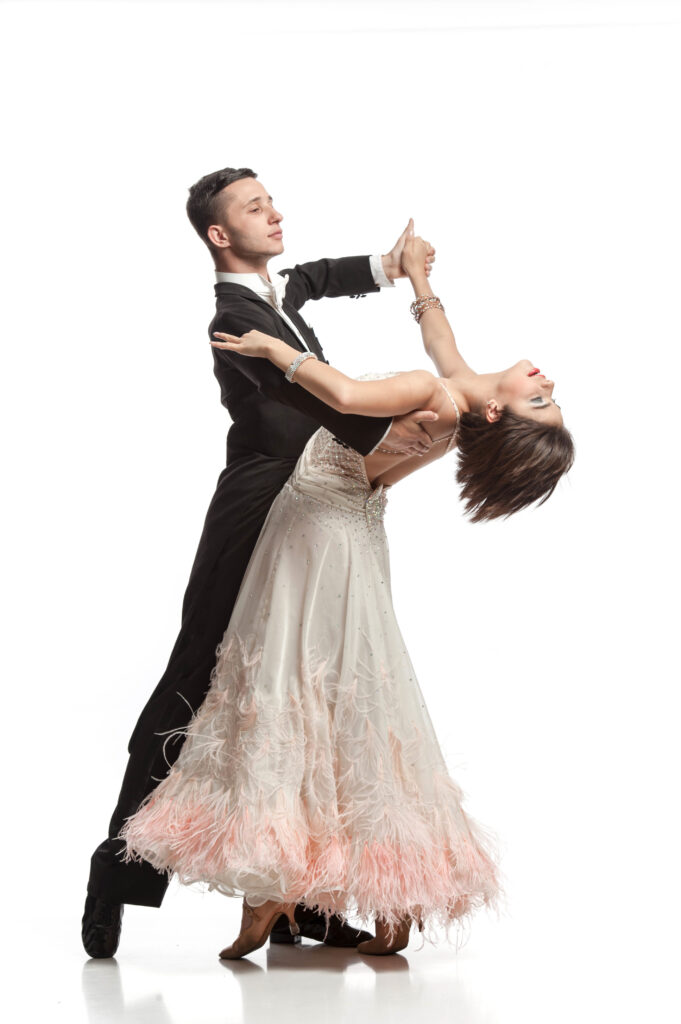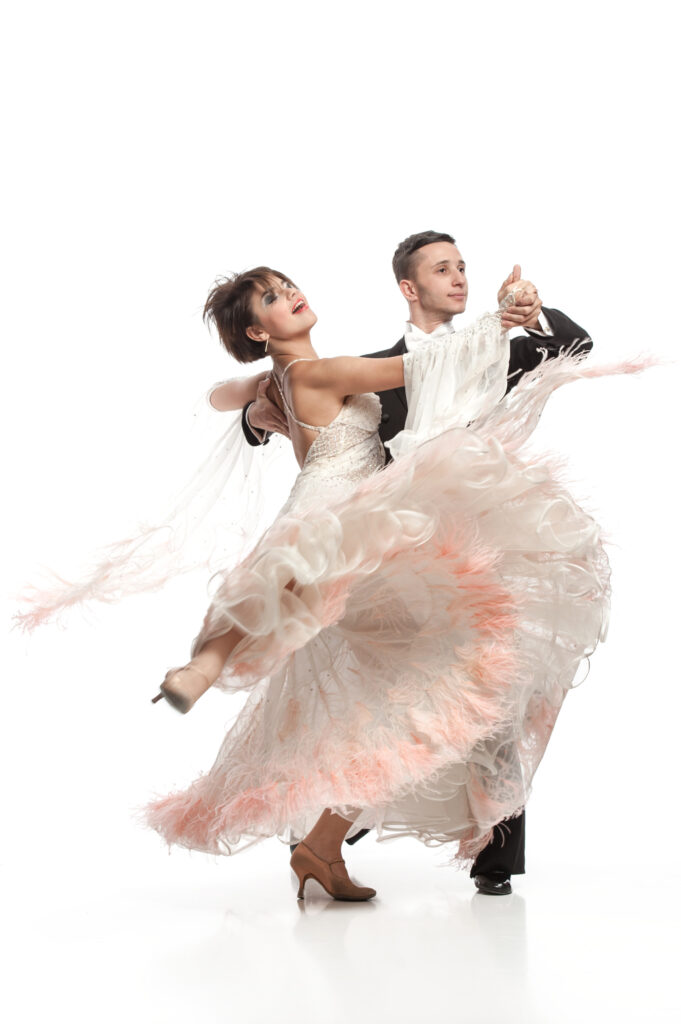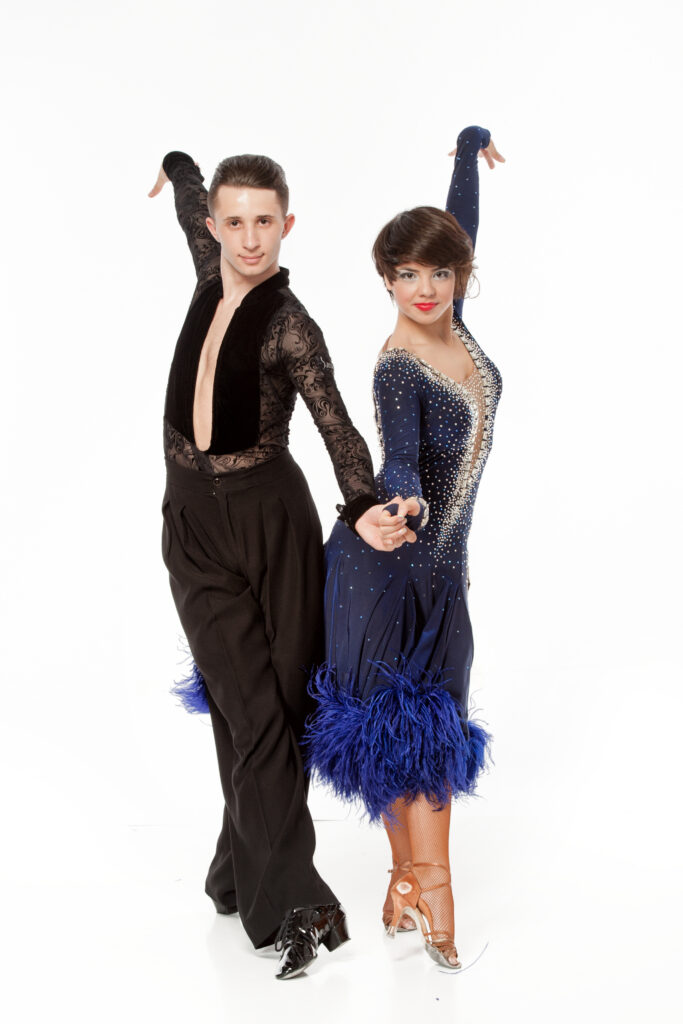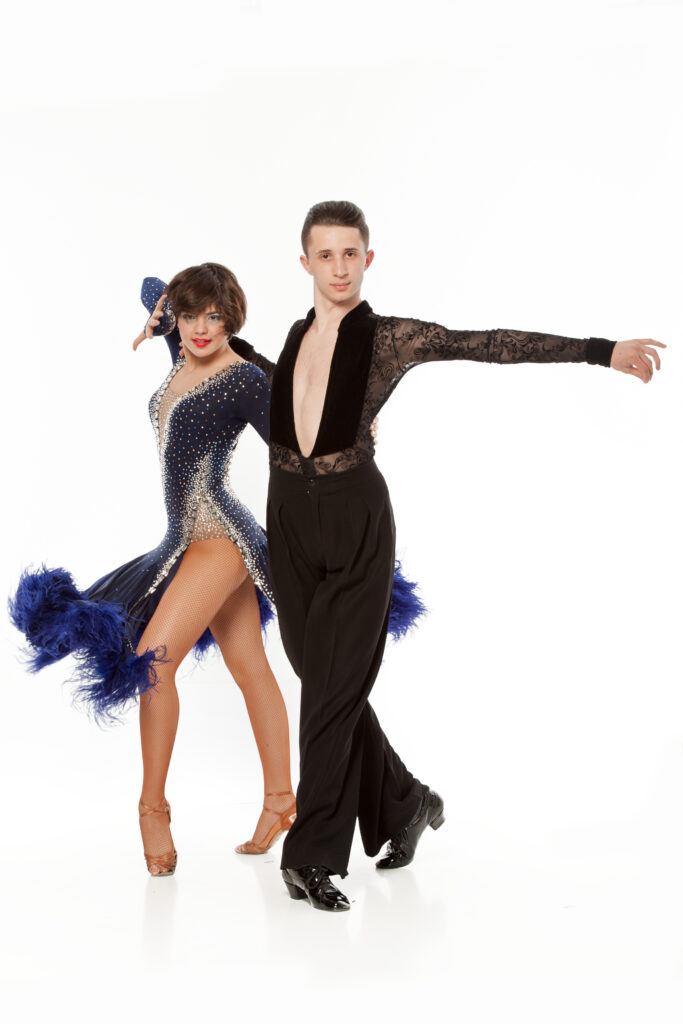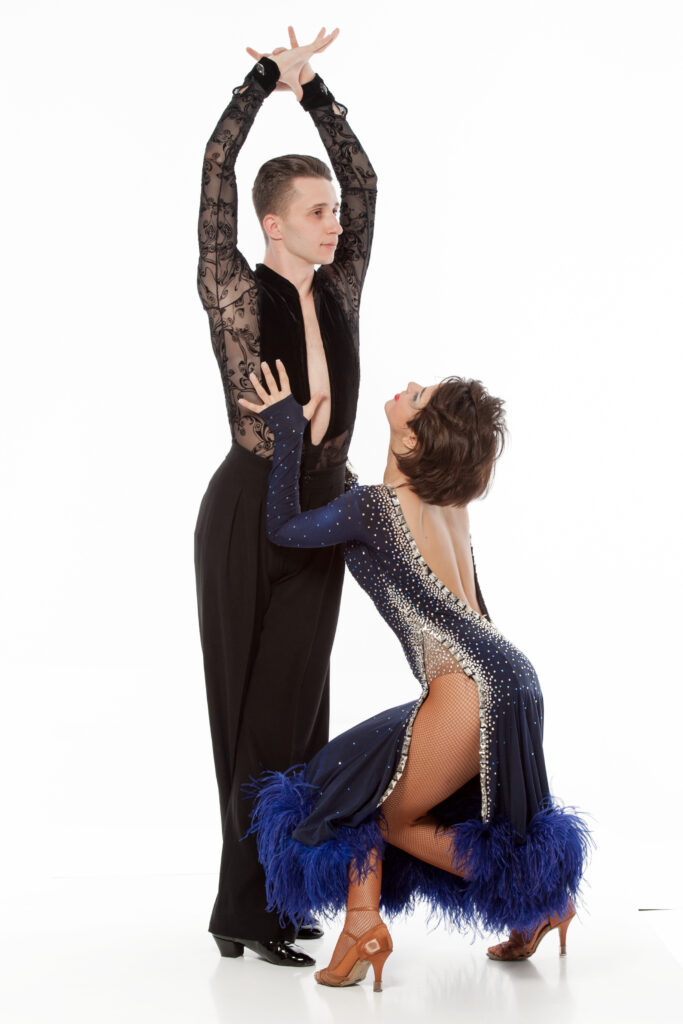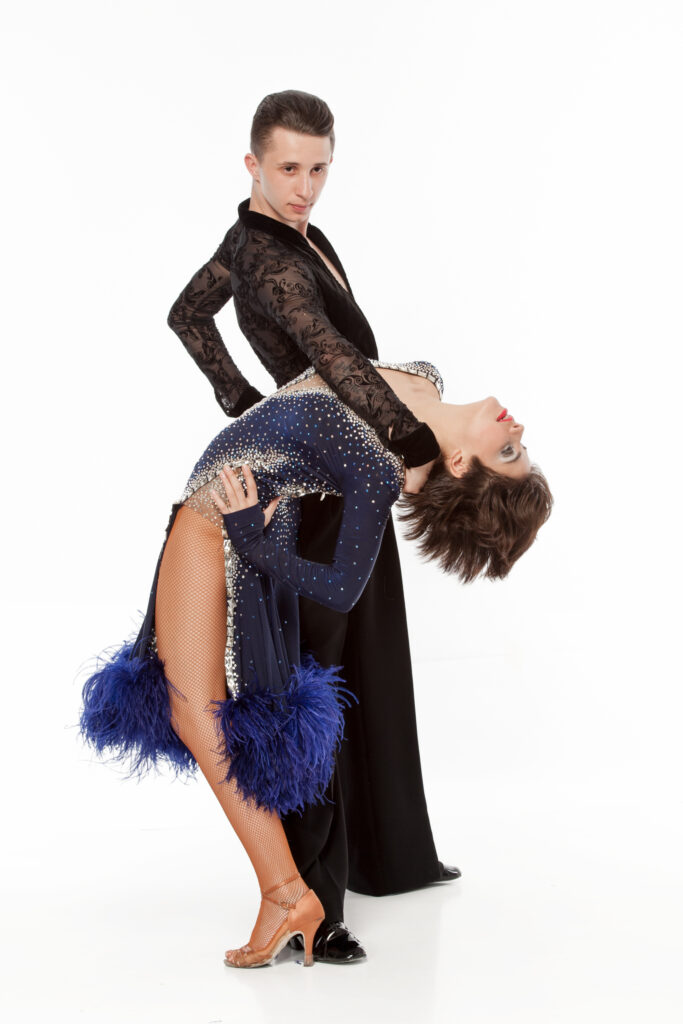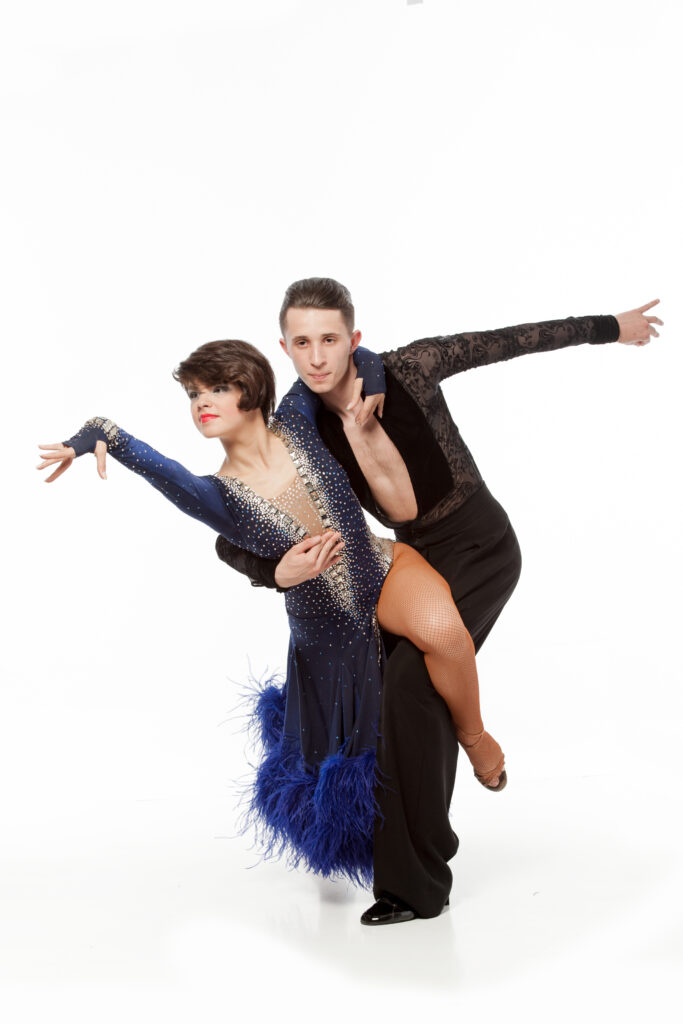Ballroom dance music
Are you looking for music for ballroom dancing? We'd like to help you with it!
Ballroom dancing is one of the most beautiful, the most spectacular and the most adorable kind of sport.
The dancers show the performance, but they use movements instead of words. Every dance has its theme, its history, its mood, its emotions and its rhythm.
It's impossible to imagine a dance without music. It's very important to choose the right music that will fully complement the things the dancers want to tell the viewers.
It helps spectaculars to understand the feelings and the emotions of dancers.
Ballroom Dancing
Under the term, "dancesport" are combined several varieties of dance, which are connected with common folk roots. Centuries ago, they were actively performed at receptions, dancing indoors on the parquet, they were called ballroom dances. Not all dances fitted under this concept, but only those that had these distinctive features:
- they were danced by couples;
- As a pair meant a boy and a girl.
Although the latter point may have minor adjustments: English culture allows ballroom dancing as opposite-sex and same-sex couples.
Nowadays, the concept of "ballroom dancing" includes "dancesport" and "sports dancing" (referred to as SBT). These features are reflected in the names of dance organizations:
In the professional dance world, it is accepted that ballroom dancing includes 10 dances, they are divided into 2 main programs. This classification is followed not only in Russia but also in other countries. According to it, the main sports dances are graded as follows:
- European program;
- Latin program.
These two programs include the main ten dances.
The European program includes tango, slow and fast foxtrot, Viennese and slow waltz. Latin American direction includes rumba, pasodoble, cha-cha-cha, and jive.
The word "ballroom" itself came to us from medieval Europe, it was the name of the dance, which was enjoyed by the rich aristocracy. It was believed that only the privileged segments of society could dance them. The long decades could change the usual medieval art, seriously affected by the Renaissance and Enlightenment, Classicism and Romanticism dances. Each new decade created its dance complexes, with individual features. In addition, ballroom dancing reflected local folk trends and professional dance.
Ballroom trends of the twentieth century were created on the basic principles of European dance, which was formed in the period from XIX to XX century, which was influenced by the culture of Latin America and Africa. It is hard to believe, but most ballroom dancing has its roots in African movements. However, it is almost impossible for a layman to understand it; all movements have been influenced by the European school of dance.
In the twenties of the twentieth century, a special Council of Ballroom Dancing was established in England, it was created from the former Imperial Society of Dance. It was the experts of this Council who streamlined the most famous at that time dance styles: waltz, slow and fast foxtrot, tango. This contributed to the emergence of various competitions and championships and the division of ballroom dancing into two currents: social and athletic.
In the period from 30 to 50 years of the twentieth century, there was an expansion of the number of varieties that belonged to the ballroom. Their structure absorbed the five main Latin directions (rumba, pasodoble, samba, cha-cha-cha, jive).
In the modern world regularly organize championships and competitions in ballroom dancing. Several major trends are defined:
- European;
- Latin American;
- bilaterals;
European and Latin American Formation (8 pairs are competing);
European and Latin American Sequence (a unique show that takes only 3 minutes).
Amateur championships are organized with the support of the WDSF, and competitions for professional athletes are held under the auspices of the World Dance Council.
The most prestigious competitions among dancers are English championships, including the UK Open and Blackpool Festival. An important type of dance is considered a competition of mixed pairs Pro-Am, this direction is particularly recognized among American and Canadian athletes.
There are ethnic varieties of ballroom dancing in the United States, and there are even local competitions in these areas: American Smooth, American Rhythm.
Originally, the concept of "ball" itself is borrowed, and it was brought into our language from the Latin ballare, meaning "to dance." Among a large number of ethnic and historical dances, ballroom dances are considered to be a special category. They are distinguished by such features:
- couples always dance;
partner and partner move, observing the points of contact. The European program implies quite a close body contact, in Latin contact is freer and is created mostly with the help of hands.
Ballroom dancing requires possession of the body and special skills, so their popularity gradually began to decline. Appeared in the '60s of the twist symbolized the end of the era of ballroom dancing. Foxtrot, waltz and tango began to be used less and less often on nonprofessional dance floors.
European Program
This program includes five varieties: Quickstep (its features include 50-52 beats per minute), Vienna Waltz (58-60 beats), Tango (30-32 beats per minute), Slow Waltz (28-29 beats), Slow Foxtrot (27-29 beats). Properly chosen outfits give a special effect to the program. Men's representatives choose tails of deep blue or black shades. The top can be replaced by a tuxedo or vest. The correct dance dress has a distinctive difference from the business and everyday suit: its cutting allows keeping the shoulders straight, even when the dancer moves his hands to the sides.
Latin American program
The following dancers belong to this direction: cha-cha-cha (tempo - 30-32 beats), jive (40-44 beats), rumba (21-25 beats), samba (50-52 beats), pasodoble (58-62 beats). An important distinction of Latin dances is that the samba and paso doble are performed with advancement along the line of dance. In other dances, Latin direction athletes remain practically in the same zone, although there may be the movement of dancers on the dance floor and return to the original point.
Latin direction requires special outfits in which the dancers will look as spectacular as possible. Women's suits are maximum open and fit the body like a second skin, emphasizing its curves. Men's outfits are maximumly fitted, allowing you to show the pumped-up, trained body of the dancer.
How to choose ballroom music
Ballroom dancing is one of the sports with choreographic training. It combines physical qualities such as strength, endurance, flexibility, coordination and agility.
Ballroom music accompanying sports dancing is very important for dancers, without it you can not achieve good results, and just a pleasant pastime. With the help of music you can show your dancing skills or, conversely, to temper the ardor, especially in the first moments of the event.
Music for dance influences the mood, emotions of dancers, increases or, conversely, dulls the excitement of sport. It can even completely change the impression of the dance, to make it more emotional or, conversely, gloomy.
As a rule, ballroom dancing, include so many dance styles, and this gives the opportunity to dance different styles and types. Music plays a very important role. In dance it is also important, because each dancer has its own unique style and zest! Music is directly related to the beauty of movement, and it creates a certain mood that helps the viewer or listener to fully immerse themselves in the story of a particular dance. Even if the performance is just being prepared, the music affects what kind of movements will be, how beautiful and harmonious they will be.
Very much attention in this genre is paid to music for demonstration performances, because it begins the preparation of all participants of the upcoming competition. Here music for dancing can be absolutely any, because it all depends on what you need to show, what style of dance should be, what direction.
Type of music is used for ballroom dancing.
5 Standard (Smooth) famous ballroom dances
| Dance | Bars per minute | Time |
|---|---|---|
| Waltz (Slow Waltz or English Waltz) | 28 | 3/4 |
| Tango | 31 | 4/4 |
| Viennese Waltz (Waltz) | 58 | 3/4 |
| Foxtrot | 28 | 4/4 |
| Quickstep | 50 | 4/4 |
5 Latin (Rhythm) famous ballroom dances
| Dance | Bars per minute | Time |
|---|---|---|
| Cha-cha-cha | 29 | 4/4 |
| Samba | 49 | 2/4 |
| Rumba | 24 | 4/4 |
| Paso Doble | 60 | 2/4 |
| Jive | 41 | 4/4 |

